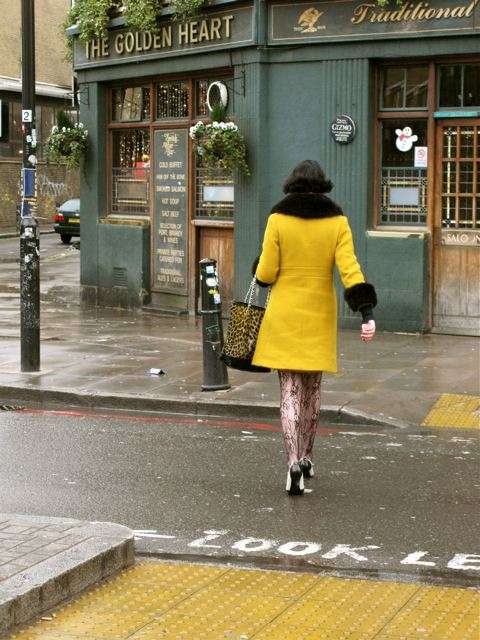'Hidden Rise in Violent Crime' in U.K. Has More to Do With Data Manipulation Than 'Growth in Violence Against Women'
No, the data doesn't show some sort of secret sexual-violence crime wave nor a reversal of decades-long crime trends.


In both America and the U.K., violent crime has been declining for at least a decade. At least that's the conventional criminal-justice wisdom these days, driven by data from the countries' top law-enforcement agencies. But The Guardian now says that this picture is misleading, and there's actually a "hidden rise in violent crime" that's being "driven by growth in violence against women."
The assertion is based on work from researchers at the U.K.'s Lancaster University, led by sociology professor and gender-research chair Sylvia Walby. The team claims that, since late 2008-early 2009, violence against women in the U.K. has been rising, leading to a spike in the overall violent crime rate. For this analysis, they looked at data collected by the Crime Survey of England and Wales between 1994 and 2014.
"The turning point in the rate of these violent crimes is consistent with an explanation focused on the reduced economic independence of women and the impact of the cuts to services on which women disproportionately depend," notes their paper, published in the British Journal of Criminology. Vivienne Hayes, CEO of the Women's Resource Centre, also blames a resurgence of sexism, telling The Guardian that the ascendancy of "violent pornography, violent computer games, street harassment and everyday sexism" is "creating a view of women which nurtures and normalises our violation."
These twin narratives—rising sexism combined with government cuts to women's services—confirm the biases of enough individuals that the story of Britain's "invisible" crime wave has been exploding on social media and making its way to U.S. publications. "The true extent of violent crime against women is being masked," reported BuzzFeed Wednesday morning. But what's really being masked—or at least downplayed—is how researchers "discovered" this hidden crime wave: through data manipulation.
You see, the Crime Survey of England and Wales involves annual, face-to-face questioning of someone from 35,000 households about their experiences with crime. "It is regarded as the gold standard of crime statistics since it includes unreported crimes and is unaffected by changes in police recording practices," The Guardian notes. As part of the survey, respondents detail the most serious crime incidents that have befallen them or their household over the previous 12 months.
Incidents can be reported as a single occurrence or a "series" crime, defined as "the same thing, done under the same circumstances and probably by the same people." For series crimes, victims are asked to say how many times the incidents occurred, with options between 2 and 96 or "more than 96/too many to count." But to avoid outliers that might skew data, statisticians tallying results for official publication cap the number of "series crimes" one can be the victim of to five per year. This, officials say, helps avoid year-to-year fluctuations in violent-crime estimates that would provide inaccurate rates of crime over time and distortions of the distribution of risk the average person has of becoming a violent-crime victim.
Walby thinks this is methodologically inappropriate because it discounts the experience of "high frequency victims," which tend to include domestic-violence victims. According to her research, around 5 percent of Crime Survey Victim Forms fall prey to the series-crime cap each year. So she and her colleagues did a new analysis in which no series-crime caps were included. They also included sex crimes such as rape, attempted rape, and sexual assault—reported as their own category by the Crime Survey—in the overall violent-crime stats.
With these tweaks, Walby and colleagues produced a significant "rise" in all violent crime that "corresponds with the economic crisis in 2008/09." They conclude that their findings have "implications for the theoretical link between economic inequality and crime."
Victims' advocates and women's groups say Walby's statistics are more reflective of reality, as a) rape is a violent crime and should be included within that category, and b) the experiences of repeat domestic assault victims shouldn't be swept under the proverbial rug. I'm open to both arguments. But then let's be clear that much of what we're talking about here is changing the way we categorize crime, not actual shifts in violence levels.
To break it down: under the standard model, we had 1) no increase in "violent crime" between 1994 and 2014, 2) no increase in sexual assault between 1994 and late 2008, 3) an increase in non-stranger sexual assaults between late 2008 and 2014. Under Walby's model, we see 1) a decrease in violent crime (including rape) up until late 2008, 2) no separate sexual-assault category, and 3) a rise in both overall violent crime and violent crime against women between 2008-2014. In either rendering, the data does show some uptick in self-reported sexual assaults starting several years ago, but this is most accurately characterized as just that, not as a "hidden rise" in violent crime or violence against women overall.
As to the inclusion of series-crime incidents numbering more than five, doing so does yield a recent uptick in the number of repeat incidents reported by individual crime victims, particularly in situations where the victim was female and the perpetrator was a domestic partner. But what it does not reveal is an increase in violent-crime victims, violent-crime perpetrators, or female victims of violent crime overall. In fact, when Warby's team looked at crime victim numbers, not individual offense numbers, they found much the same pattern as for the capped analysis, with a continuing fall in the rate of violent crime and violent crime against women and a flat rate of domestic violent crime post-2008.
"Female victims of violent crime experiencing one or a small number of victimizations are continuing to fall," the study authors conclude, "while the number of female victims of violent crime experiencing high-frequency repeat victimizations has stopped falling [and] now appears to be increasing." Such an increase in violent activity from serial abusers—and its potential relationship to both the economy and cuts to victims' services—is certainly worthy of research and discussion. But it's a different thing entirely than there being some sort of secret sexual-violence crime wave or a reversal of decades-long declining crime trends.



Show Comments (198)